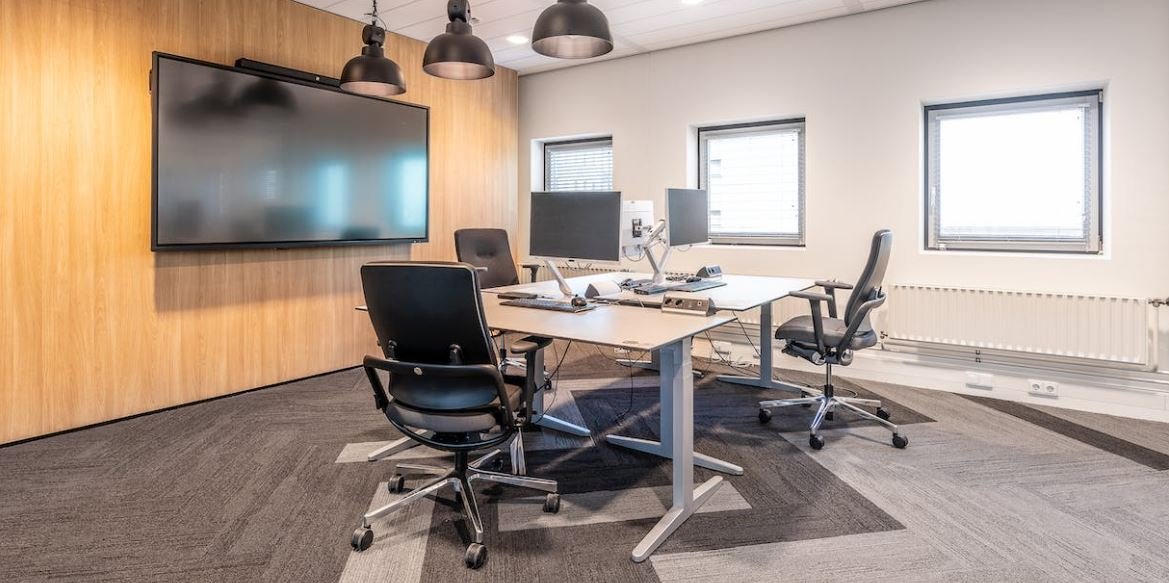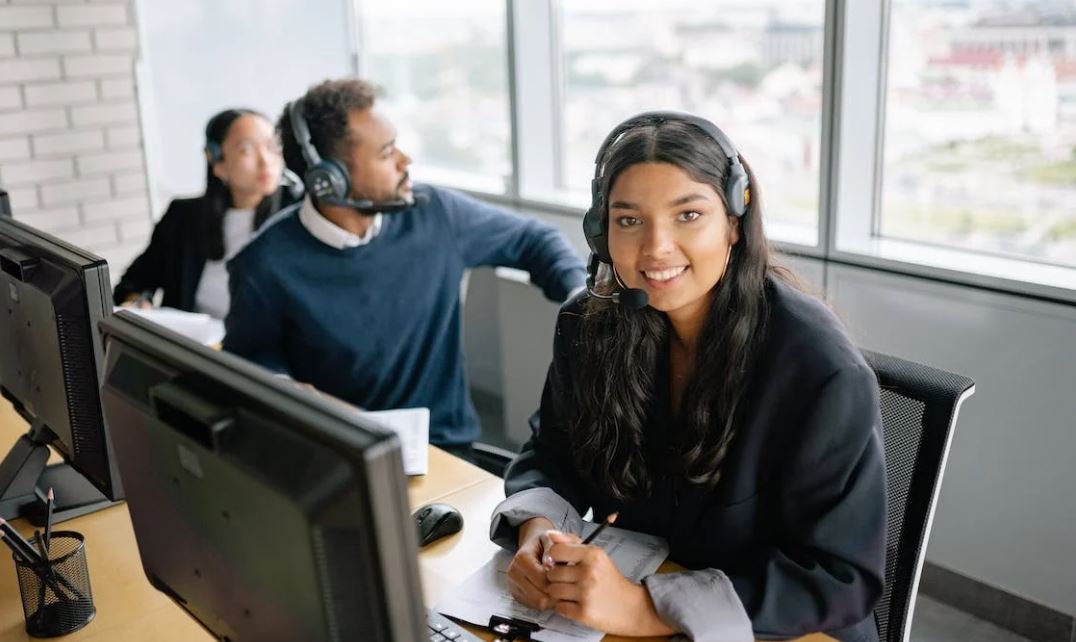What Is Media in Art?
Artists have been using various forms of media to create their works for centuries. In the context of art, media refers to the materials and techniques utilized to make and present artwork. These can include traditional mediums such as paint, sculpture, and paper, as well as digital technologies and unconventional materials.
Key Takeaways:
- Media in art refers to the materials and techniques used to create and present artwork.
- It includes traditional mediums like paint, sculpture, and paper, as well as digital technologies and unconventional materials.
- Artists choose specific media to convey their ideas and evoke certain emotions.
Artists choose specific media that align with their artistic vision and objectives. By carefully selecting the materials and techniques, they can effectively convey their ideas and evoke specific emotions from the viewers.
For example, the use of vibrant oil paints in a landscape painting can express the artist’s admiration for the beauty of nature, while a sculpture made of recycled materials might serve as a commentary on sustainability and consumerism.
Traditional Media in Art
Traditional media in art encompasses a wide range of materials and techniques that have been widely utilized throughout art history. Some common examples include:
- Oil paint: This versatile medium has been favored by artists for centuries due to its vibrant colors, smooth texture, and malleability.
- Watercolor: Artists often use watercolor to create delicate and transparent compositions.
- Sculpture: Sculpting involves shaping various materials such as stone, wood, metal, or clay to create three-dimensional artworks.
- Drawing: Drawing typically involves the use of pencils, pens, charcoal, or pastels to create lines and shading on paper.
| Medium | Advantages | Disadvantages |
|---|---|---|
| Oil Paint | Dries slowly, allowing for blending and layering. | Requires specialized cleaning solvents and prolonged drying time. |
| Watercolor | Produces vibrant and transparent colors. | Mistakes are difficult to correct as the paint is not easily removed once applied. |
| Sculpture | Allows for the creation of three-dimensional artworks with texture and depth. | Requires knowledge of various sculpting techniques and can be physically demanding. |
| Drawing | Offers precise control and versatility. | Paper can yellow or degrade over time. |
Using traditional media provides artists with a tangible and tactile experience, allowing them to physically interact with the materials and leave behind their unique mark.
Digital Media in Art
In recent years, the rapid advancement of technology has introduced new possibilities for artists, resulting in the rise of digital media in art. Digital media involves the use of computers, software, and digital devices to create, manipulate, and exhibit artwork.
Artists can now explore digital painting, photography, video art, and interactive installations, among many other forms. The use of digital media allows for greater experimentation, precision, and the ability to easily edit and reproduce artworks.
Unconventional Media in Art
Artists are constantly pushing boundaries and experimenting with unconventional materials to create unique and thought-provoking works of art. Some examples of unconventional media used in art include:
- Found objects: Artists incorporate everyday items into their artwork, giving them new contexts and meanings.
- Body art: Artists use their own bodies as a medium, engaging in performances or creating temporary art pieces.
- Technology: Artists utilize technology such as virtual reality, augmented reality, and robotics to create immersive and interactive experiences for the viewers.
| Media | Artistic Application |
|---|---|
| Found objects | Creating assemblages or sculptures using discarded materials to comment on consumerism. |
| Body art | Engaging in live performances or temporary installations to explore identity and personal narratives. |
| Technology | Utilizing virtual or augmented reality to create immersive and interactive art experiences. |
Through the use of unconventional media, artists challenge traditional notions of art and expand the possibilities of creative expression.
The concept of media in art is constantly evolving as artists explore new materials, techniques, and technologies. Whether utilizing traditional mediums, digital tools, or unconventional materials, artists select media that best aligns with their artistic vision to communicate their ideas and emotions to the audience.

Common Misconceptions
Media in Art
Many people have misconceptions about what exactly media refers to in the context of art. Contrary to popular belief, media in art does not simply mean the materials used to create a work of art. It encompasses a broader definition that includes not only the physical materials, but also the techniques and processes used to create the artwork.
- Media in art does not solely refer to the physical materials used.
- It also encompasses the techniques and processes employed in creating the artwork.
- The choice of media can greatly impact the message and interpretation of the artwork.
Media as a Limitation
Another common misconception is that the media used in an artwork limits the artistic expression or creativity of the artist. However, media should be seen as a tool that artists use to convey their ideas and concepts. Different media offer unique possibilities for creative expression, and artists often explore and experiment with various materials and techniques to achieve their desired artistic outcomes.
- Media should be seen as a tool rather than a limitation for artistic expression.
- Different media offer unique possibilities for creative exploration.
- Artists often experiment with various materials and techniques to achieve their desired outcomes.
Media as Non-Traditional Art
Some people mistakenly assume that art must be created using traditional media, such as paint, graphite, or sculpture. However, media in art can extend beyond these traditional forms and include digital media, installation art, performance art, and even found objects. The use of non-traditional media allows artists to push the boundaries of traditional art and explore new avenues of expression.
- Art can be created using non-traditional media, such as digital media or found objects.
- Non-traditional media allows artists to push the boundaries of traditional art forms.
- Installation art and performance art are examples of non-traditional media in art.
Media as the Main Focus
One misconception about media in art is that it should always be the main focus or the most important aspect of the artwork. While media does play a significant role in the creation and interpretation of art, it is not the sole determinant of artistic merit. The concept, message, and artistic intent behind the artwork are equally important and should be given careful consideration alongside the choice of media.
- Media is not always the main focus or the most important aspect of art.
- The concept, message, and artistic intent are equally important considerations.
- The choice of media should support and enhance the overall artistic vision.
Media and Artistic Skill
Lastly, some people wrongly assume that the choice of media determines the level of artistic skill or talent. However, artistic skill goes beyond the ability to manipulate materials or use certain techniques. It encompasses the artist’s ability to convey emotions, ideas, and concepts effectively through their artwork, regardless of the media used. Artistic skill is multifaceted and cannot be solely judged based on the medium alone.
- Artistic skill should not be judged solely based on the choice of media.
- The ability to convey emotions, ideas, and concepts effectively is an essential aspect of artistic skill.
- Media is just one facet of artistic expression and should not define the artist’s talent.

What Is Media in Art?
Media in art refers to the different materials and methods used by artists to create their works. These can include traditional tools like paint and brushes, as well as new technologies such as digital software and video installations. The choice of media can greatly impact the visual and conceptual aspects of an artwork, allowing artists to convey their ideas and emotions in unique and innovative ways.
Table: Evolution of Media in Art
Throughout history, the media used by artists has evolved and diversified. This table explores the different media used in art over time.
| Era | Main Media |
|---|---|
| Ancient Times | Rock carving, clay pottery |
| Renaissance | Oil paint on canvas, marble sculpture |
| Modernism | Acrylic paint, photography |
| Contemporary Art | Mixed media, digital art |
Table: Popular Media in Contemporary Art
In today’s art world, artists have a multitude of media at their disposal. Here are some of the most commonly used media in contemporary art.
| Media | Description |
|---|---|
| Oil Paint | A traditional medium known for its rich colors and smooth texture. |
| Pencil | A versatile medium allowing for intricate details and shading. |
| Sculpture | Three-dimensional artworks created by shaping various materials like clay, wood, or metal. |
| Photography | The art of capturing images using a camera, often manipulated or enhanced digitally. |
| Video Art | Artworks that utilize moving images and sound to convey a message or tell a story. |
Table: Influence of Media on Art Movements
Art movements throughout history have often been influenced by the discovery or adoption of new media. Here are some examples of influential media on various art movements.
| Art Movement | Influential Media |
|---|---|
| Cubism | Collage and mixed media techniques |
| Pop Art | Silkscreen printing and commercial imagery |
| Conceptual Art | Text-based art and video installations |
| Digital Art | Computers and digital software |
Table: Impact of Media on Artistic Styles
The choice of media in art can significantly influence the style and aesthetics of an artwork. Here are some examples of how different media impact artistic styles.
| Media | Artistic Style |
|---|---|
| Watercolor | Delicate and translucent, often characterized by loose brushstrokes. |
| Graffiti | Street-inspired and bold, featuring vibrant colors and dynamic compositions. |
| Collage | Layered and fragmented, incorporating diverse visual elements. |
| Installation | Interactive and immersive, often transforming physical spaces. |
Table: Artists Known for Experimental Media
Some artists are known for pushing the boundaries of traditional media and exploring innovative approaches. Here are a few artists recognized for their experimental use of media.
| Artist | Experimental Media |
|---|---|
| Marina Abramović | Performance art and body-based explorations |
| Olafur Eliasson | Installations combining light, water, and natural elements |
| Yayoi Kusama | Polka dot motifs, infinity mirror rooms |
Table: Cultural Significance of Media in Art
The media used in art often carries cultural significance and reflects societal values. Here are some examples of how media can contribute to the cultural context of artworks.
| Media | Cultural Significance |
|---|---|
| Bronze Sculpture | Historically associated with grandeur and power |
| Mixed Media Collage | Embracing diversity and fragmentation in a globalized world |
| Graffiti | Voices of unrepresented communities challenging established norms |
Table: Media in Art Education
Art education plays a crucial role in teaching students about different media and their expressive potential. Below are some common media introduced in art education.
| Media | Application |
|---|---|
| Tempera Paint | Fundamental color theory and composition exercises |
| Clay | Introduction to sculptural techniques and tactile exploration |
| Pastels | Exploration of color blending and gestural mark-making |
| Charcoal | Study of value, contrast, and rendering techniques |
Table: Technological Advancements in Art Media
With the advent of technology, artists have gained access to a vast array of new media and tools. Here are some technological advancements that have shaped art media.
| Technology | Impact on Art Media |
|---|---|
| Photography | Revolutionized representation and documentation of art |
| Digital Software | Expanding possibilities for digital painting, animation, and 3D modeling |
| Virtual Reality | Creating immersive experiences and interactive artwork |
Understanding the significance of media in art allows us to appreciate the diverse techniques and materials utilized by artists throughout history. From traditional mediums like oil paint to cutting-edge digital technologies, each medium brings its own unique qualities to the creative process. By embracing and experimenting with different media, artists continue to push the boundaries of artistic expression, enriching our visual culture in the process.
Frequently Asked Questions
What is media in art?
What is media in art?
How does the choice of media impact an artwork?
How does the choice of media impact an artwork?
What are some common media used in art?
What are some common media used in art?
Can an artist use multiple media in a single artwork?
Can an artist use multiple media in a single artwork?
How do artists choose the right media for their artwork?
How do artists choose the right media for their artwork?
Can digital art be considered a form of media?
Can digital art be considered a form of media?
What is the significance of media in contemporary art?
What is the significance of media in contemporary art?
How does the choice of media relate to the style of an artwork?
How does the choice of media relate to the style of an artwork?
Do artists need to master multiple types of media?
Do artists need to master multiple types of media?
Can the use of unconventional media be considered art?
Can the use of unconventional media be considered art?




